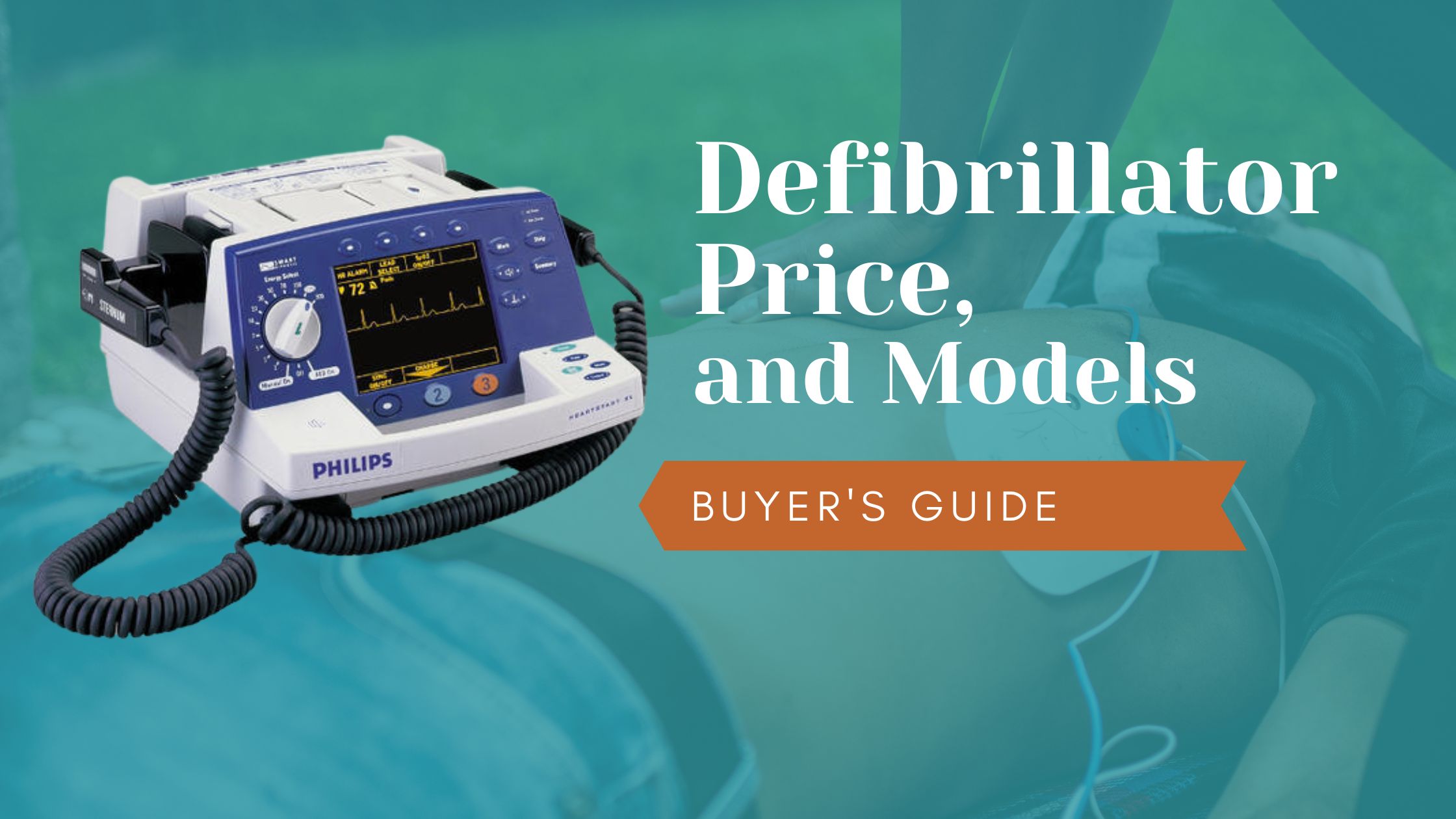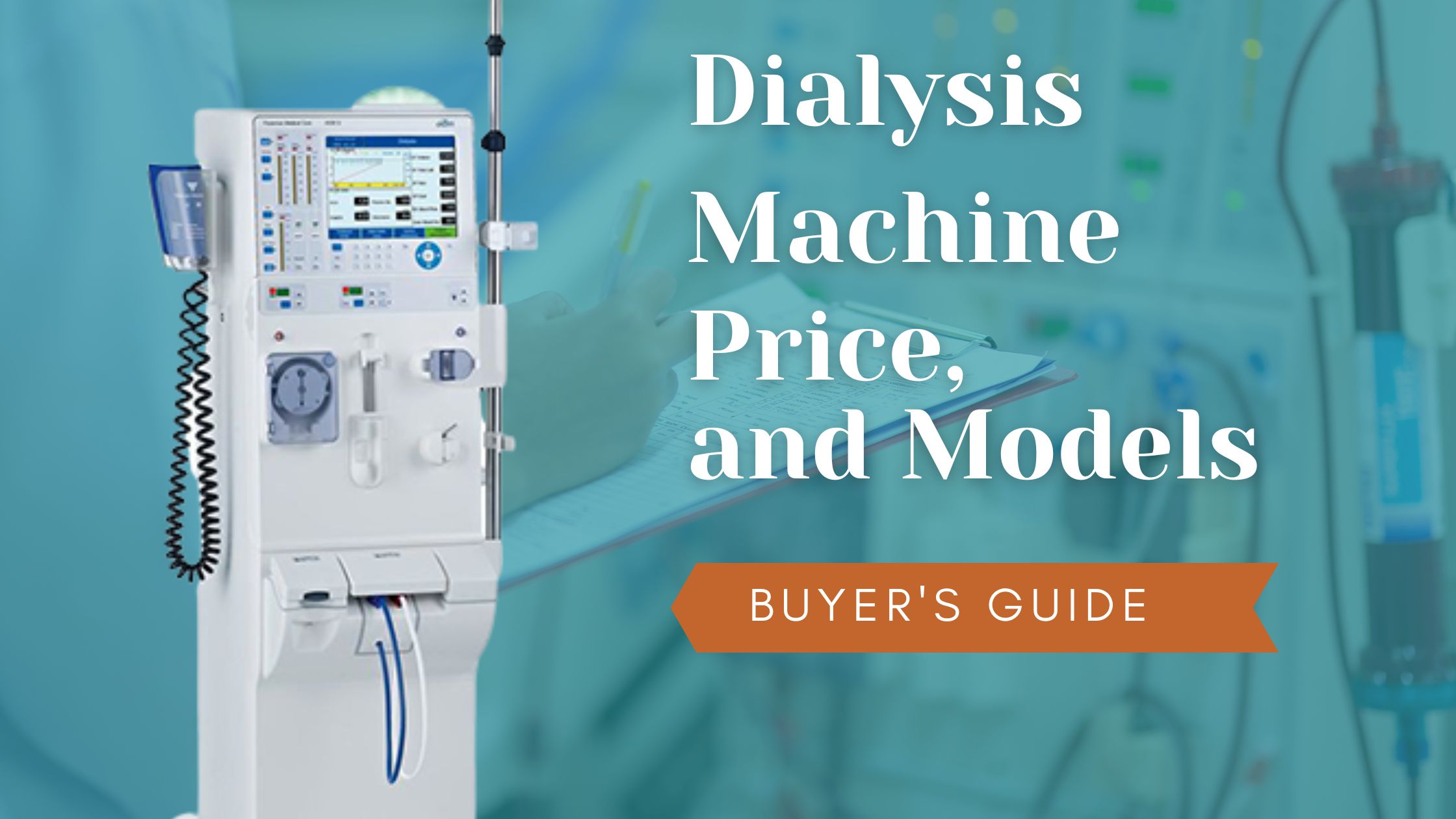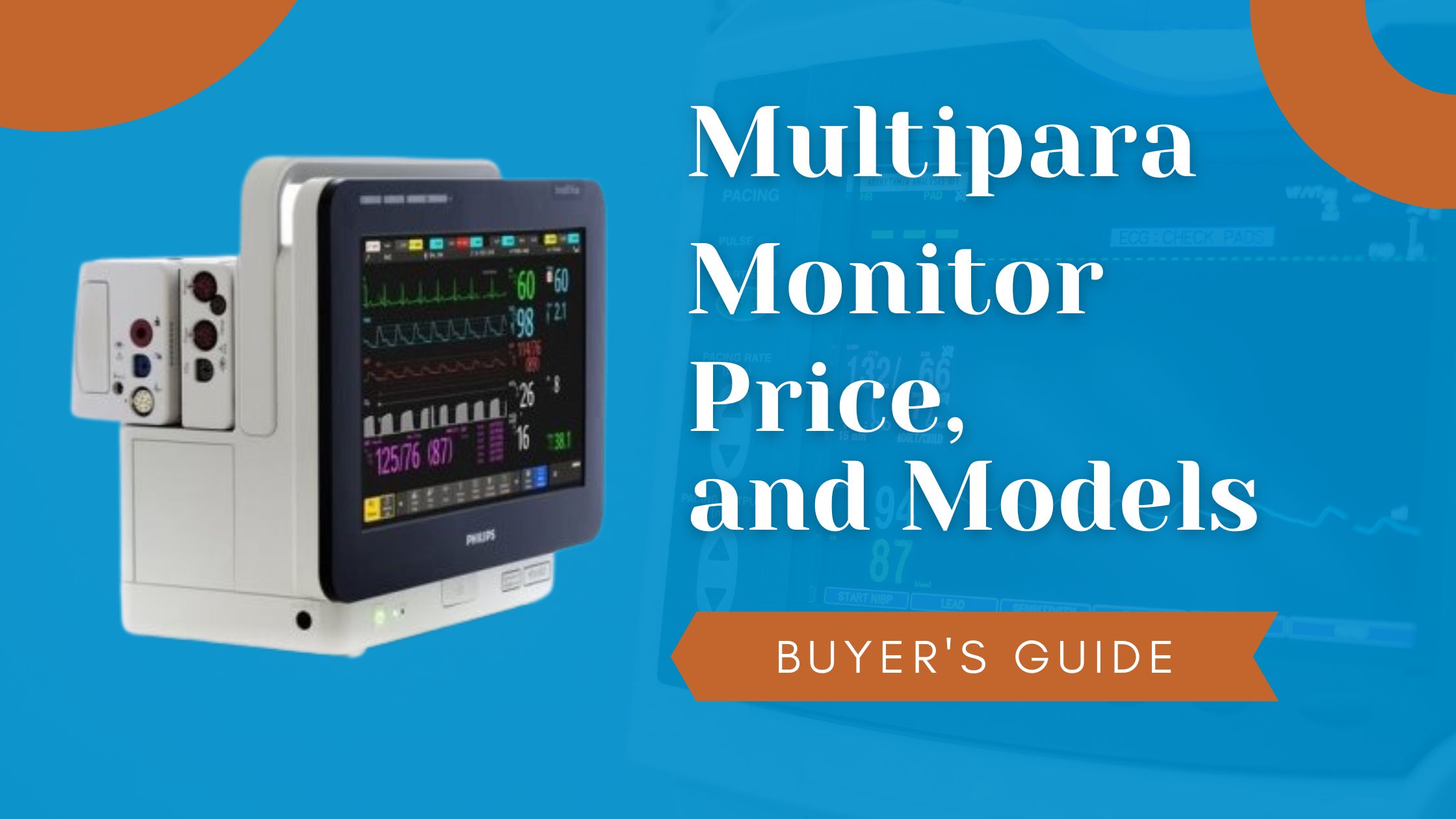A defibrillator is a machine that delivers a high-energy electric shock to a person who is experiencing cardiac arrest. Defibrillation is the name for this high-energy shock, and it’s an important aspect of attempting to rescue someone who’s in cardiac arrest. A defibrillator is known as a heart shock machine, an AED (Automated External Defibrillator), or a PAD (Public Access Defibrillator). Defibrillators can be external, transvenous, or implanted (implantable cardioverter-defibrillator), depending on the type of device used or needed.
- Use of defibrillators
- Types of Defibrillator
- When is it necessary to use an AED Defibrillator?
- Types of an AED Defibrillator
- Which is better: monophasic or biphasic AEDs?
- Components of Defibrillator & their function
- 6 Best defibrillator models in India 2021: Detailed
- Best defibrillator brands in India
- Conclusion
- Frequently Asked Questions
Use of defibrillators
Indications– In cardiac rescue, defibrillation is frequently used (CPR). CPR (cardiopulmonary resuscitation) is an algorithm-based technique that aims to restore cardiac and pulmonary function. Only some types of cardiac dysrhythmias, such as ventricular fibrillation (VF) and pulseless ventricular tachycardia, require defibrillation. Defibrillation is not recommended if the heart has fully stopped, as in asystole or pulseless electrical activity (PEA). If the patient is cognizant and has a pulse, defibrillation is not recommended. Electrical shocks administered incorrectly can result in serious dysrhythmias such ventricular fibrillation.
Application method– The defibrillation device that is usually available out of the medical centers is the automated external defibrillator (AED), a portable machine that can be used even by users with no previous training. This is possible because the system generates pre-recorded audio instructions for the user, as well as automatically checking the victim’s status and administering the appropriate electric shocks. Defibrillators come with written instructions that walk you through the operation step by step.
Outcomes- Out-of-hospital cardiac arrest survival rates are dismal, often less than 10%. In-hospital cardiac arrests have a greater success rate of 20%. The specific heart rhythm of persons who present with cardiac arrest can have a major impact on survival rates. People who present with a shockable rhythm (such as VF or pulseless ventricular tachycardia) have better survival chances than those who present with a non-shockable rhythm (such as asystole or PEA).
Types of Defibrillator
There are various types of defibrillators in use today. Manual external defibrillators, manual internal defibrillators, automated external defibrillators (AEDs), implantable cardioverter-defibrillators (ICDs), and wearable cardiac defibrillators are among them.
Manual external defibrillator- These defibrillators need greater experience and training to use efficiently. As a result, they are only found in hospitals and a few ambulances with qualified hands. In combination with an ECG, the trained provider analyses the heart rhythm and then manually decides the voltage and time of the shock delivered to the patient’s chest through external paddles.
Implantable cardioverter-defibrillator- This is also known as an automated internal cardiac defibrillator (AICD). They act like a pacemaker, constantly monitoring the patient’s heart and detecting ventricular fibrillation, ventricular tachycardia, supraventricular tachycardia, and atrial fibrillation. The gadget automatically estimates the voltage of the shock to restore heart function when an irregular rhythm is recognized.
Manual internal defibrillator- Internal paddles in manual internal defibrillators provide an electric shock straight to the heart. They’re exclusively used in the operating room because they’re used on open chests. It was first created in 1959.
Automated external defibrillator (AED)– These are defibrillators that make use of computer technology to evaluate the heart’s rhythm and successfully decide if it is shockable. Medical facilities, government offices, airports, hotels, sports stadiums, and schools all have them.
Wearable cardiac defibrillator– Further research on the AICD led to the development of the wearable cardiac defibrillator, which is a portable external defibrillator that is generally advised for patients who do not require an AICD right away. This device can keep track on the patient 24 hours a day. It’s only useful when it’s on your body, and it sends a shock to your heart whenever it’s needed. However, it is currently in short supply on the market.
Automated external defibrillators (AEDs) are portable devices which are most common and widely used in healthcare sector.
When is it necessary to use an AED Defibrillator?
AEDs are portable, life-saving devices. It is used to treat persons who have suffered sudden cardiac arrest. It’s a condition in which the heart stops beating abruptly and unexpectedly. Accessories such as a battery and pad electrodes are included in the AED system. They are required for the AED to detect and interpret an electrocardiogram and deliver an electrical shock. AEDs are divided into two categories: public access and professional use.
- Public access AEDs have accessibility to the general public Airports, community centers, schools, government buildings, hospitals, and other public places. They are designed for use by untrained or briefly trained laypersons.
- Professional use AEDs can use in the workplace First responders who have received further AED training. Such as emergency medical technicians (EMTs) and paramedics.
AEDs can be semi-automated or fully automated.
- Semi-automated defibrillators evaluate the heart’s rhythm and encourage the user to press a button to give a defibrillation shock if an aberrant cardiac rhythm is detected that requires a shock.
- Fully automated defibrillators evaluate the heart’s rhythm and, if instructed by the device software, deliver a defibrillation shock without the need for user intervention.
Types of an AED Defibrillator
Defibrillators are often marketed as “high-energy” devices. The word “high-energy” refers to the electric current utilized by a defibrillator to shock a heart back into normal rhythm. To deliver a shock, different defibrillators use different waveforms.
How to Spot the Difference Between Monophasic and Biphasic AEDs?
Monophasic AED
AEDs that emit a sort of shock are known as monophasic AEDs. It transmits a single-direction electrical current from one electrode on one side of the chest to the other electrode on the other side. Since the development of AED devices, monophasic waveform defibrillation has been employed. It has been replaced by more effective defibrillators as a result of technological and scientific developments.
The energy delivered by the pads in monophasic defibrillation is determined by the height of the capacitor’s voltage during charging. The waveform associated with monophasic defibrillation contains just one peak, which is critical for defibrillation success. In order to stop the deadly rhythm or fibrillation, there must be adequate current reaching the heart.
Biphasic AED
Biphasic waveform defibrillators use bidirectional current flow rather than monophasic AEDs, which use only one direction of current flow. These defibrillators were first released in 1996, and the direction of current flow is reversed at some time throughout the defibrillation cycle during the discharge from the device due to the shocks delivered by these devices.
The pulse in biphasic AEDs consists of a positive and negative peak. The current flows from electrode A to electrode B at the positive peak and from B to A during the negative peak. The impedance of the thorax (the body’s resistance to current) is measured initially, and the voltage level is adjusted accordingly.
Which is better: monophasic or biphasic AEDs?
Monophasic defibrillators were the very first defibrillators, and they were used for a long period until biphasic defibrillators were invented. Despite the continuous use of monophasic defibrillators, biphasic devices have become increasingly prevalent, and several companies no longer build the earlier units. When these defibrillators are evaluated side by side, it’s impossible not to be concerned about their quality.
Is it true that biphasic AED defibrillators are better? Biphasic machines are not only trendy in the healthcare field, lightweight, and easy to spot, but they are also superior to their older predecessors.
The supremacy of biphasic machines can be attributed to a variety of factors, including the fact that biphasic AEDs can achieve higher efficacy while delivering the same or even less energy. Simultaneously, they cause less deterioration in heart function, which is always crucial.
Another advantage of biphasic defibrillators is that they rarely cause other side effects such skin burns, which can occur with monophasic defibrillators. Furthermore, because they use less energy to achieve the same results, biphasic AED units are typically lighter, smaller, and require less maintenance than monophasic defibrillators.
Monophasic devices, on the other hand, can be quite big and difficult to manage in a hurry. Biphasic machines are becoming increasingly versatile and useful in terms of features and possibilities they provide to rescuers as technology advances with science.
Components of Defibrillator & their function
A control box, a power supply, delivery electrodes, cables, and connectors are all part of the basic construction of an external defibrillator. While these devices are occasionally implanted in patients, the focus of this research is on portable units used in hospitals and emergency rooms.
Controls- A small, lightweight plastic case serves as the control box. It houses the circuits for generating and storing power. High voltage generating circuits generate the charge that is provided to the patient in general, using energy stored in a capacitor bank in the control box. Up to 7 kV of electricity can be stored in the capacitor bank. The shock given by this technology can be anything between 30-400 joules. The control electronics and operator input buttons are also housed in the control box. A power control button, an energy select control, a charge button, and an energy discharge button are all common buttons on a defibrillator control box. Internal paddles or disposable electrodes are controlled differently in some defibrillators.
Electrodes- The electrodes are the parts of the defibrillator that give energy to the heart of the patient. Hand-held paddles, internal paddles, and self-adhesive, pre-gelled disposable electrodes are among the many types of electrodes available. Disposable electrodes are generally favored in emergency situations because they have benefits such as boosting shock speed and enhancing defibrillation technique. The stream flow is affected by the paddle size. Larger paddles generate less resistance, allowing more current to flow to the heart. As a result, larger paddles are preferred. Adult paddles are typically between 3.1 and 5.1 inches (8-13 cm) in diameter, whereas children paddles are smaller.
Battery- Chemical reactions are stored in batteries. A number of batteries are utilized in defibrillators. Lead-acid, lithium, and nickel-cadmium systems are examples of systems that are defined by the chemical reactions they contain. When not in use, defibrillators are plugged in and recharged by an external power source. Defibrillators are kept in climate-controlled areas because excessive temperatures damage the batteries. Batteries need to be replaced after a certain amount of time. Battery chemistries are inherently corrosive and potentially poisonous, therefore this is critical.
6 Best defibrillator models in India 2021: Detailed
BPL (DF2617R) Biphasic Defibrillators with Recorder
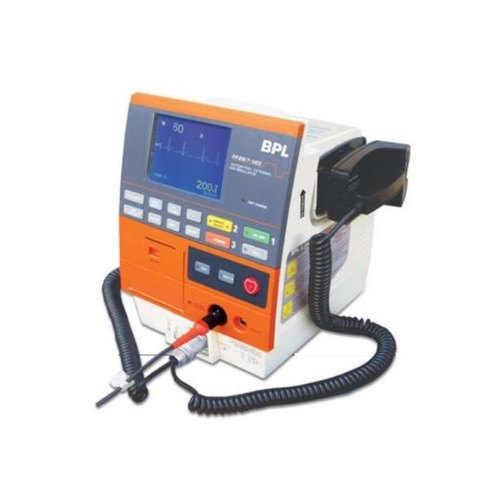
Features & Specifications
- Biphasic defibrillator with Recorder
- 5.7-inch LCD Screen
- User-selectable energy levels from 2J to 300J in Manual Defibrillation mode
- Optional AED Mode, which has voice prompt & Metronome Signal for CPR Support
- Synchronized Cardioversion
- Remote energy selection and charging through Paddles
- Biphasic Defibrillator has 24 events recording
- Minimum 100 discharge of 300J with a fully charged new battery
Mediana D500 Biphasic Defibrillator (Basic)
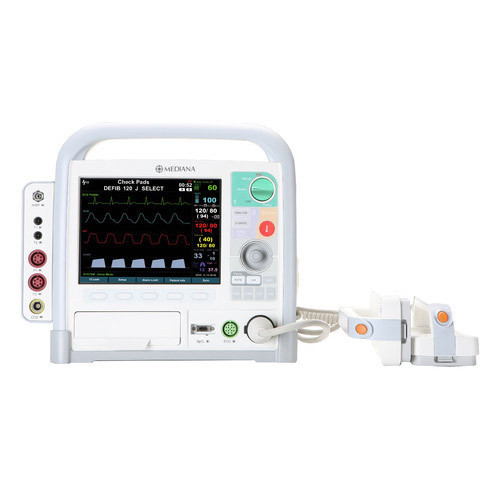
Features & Specifications
- Defibrillation – Semi-automatic AED mode with easy to follow step-by-step visual and audio instructions and advanced technology Biphasic manual defibrillation – with paddles/pads
- Monitoring – 12 Lead ECG display – a full range of monitoring options available, including 3/5/12 lead ECG, SpO2, NIBP, IBP, Temp and EtCO2
- Non-Invasive Pacing – Demand and non-demand pacing modes with adjustable pacing rates
- Dual Battery – Rechargeable dual battery system with automatic switching. Each battery supports a minimum of 100 shocks and 5 hours operating time
Mindray BeneHeart D3 Biphasic Defibrillator
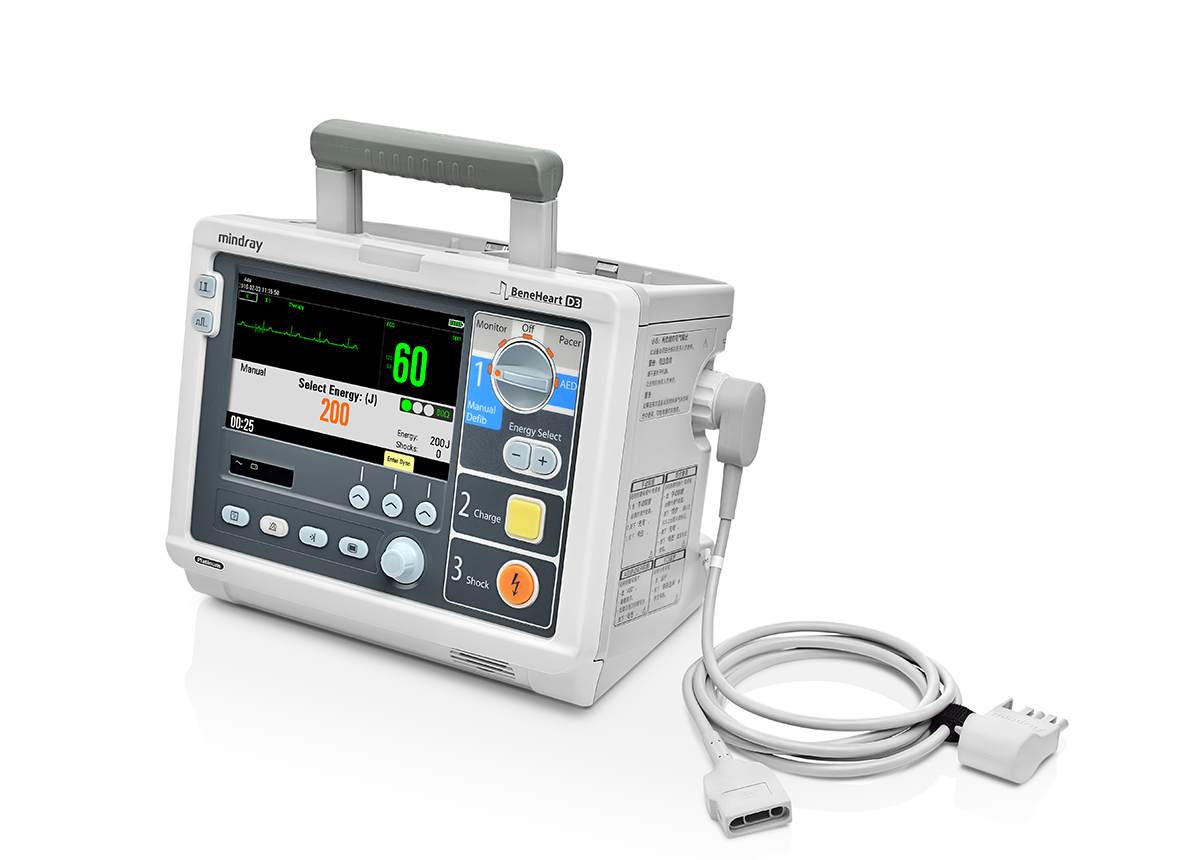
Features & Specifications
- Compact 4-in-one integrated design: monitoring , Manual Defib , AED and pacing
- 7″ TFT display with 3 waveforms assures easy ECG and SPO2 viewing
- Defibrillation , Synchronized cardioversion and AED with Biphasic technology
- Intelligent Li-ionic battery power supply supporting 2.5h-monitoring/ 100 shocks / 2h-pacing
- Large capacity of data storage : 24 h ECG waveform / 72 h trend analysis / 100 patient profile
- Escalating dose from 1J to 360J to Maximize defibrillation success
- Stands up to rugged use—IP44 rating and impact test of 0.75m
- Compact, light weight special for both hospital and ambulance application
Philips Heart start XL+ Defibrillator
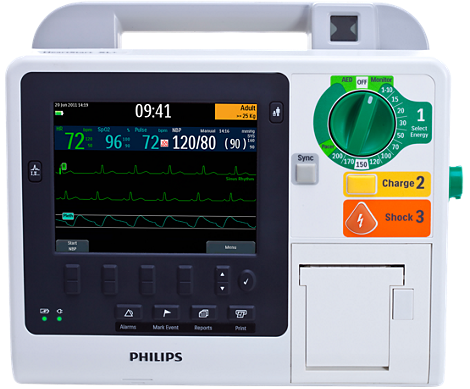
Features & Specifications
- Waveform– Biphasic Truncated Exponential. Waveform parameters adjusted as a function of patient impedance
- Size : 9˝ high x 11.6˝ wide x 10.9˝ deep (23 cm x 29.6 cm x 27.9 cm)
- Battery :Rechargeable, lithium ion; see battery label for capacity information
- Weight : 14.7 lbs. (6.6 kg), includes one battery/one new roll of paper/one pads cable. Incremental weight of external standard paddles and paddle tray is less than 3 lbs. (1.3 kg)
- Shock delivery Via multifunction electrode pads or paddles
Schiller Defigard 400 Biphasic Defibrillator
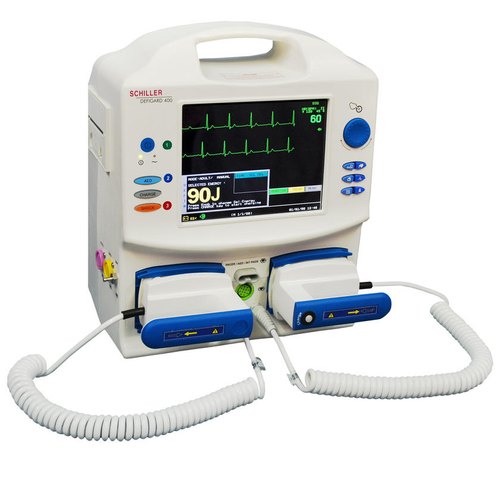
Features & Specifications
- Large 8.4″ color TFT screen with LED backlight
- Single rotary knob operation
- Direct function keys
- Visual instruction and guidance on screen
- 3 ECG strips memory
- 24 hours trend for all parameters
- Adult and pediatric application
- Lightweight portable
Philips Efficia DFM100 Biphasic Defibrillator
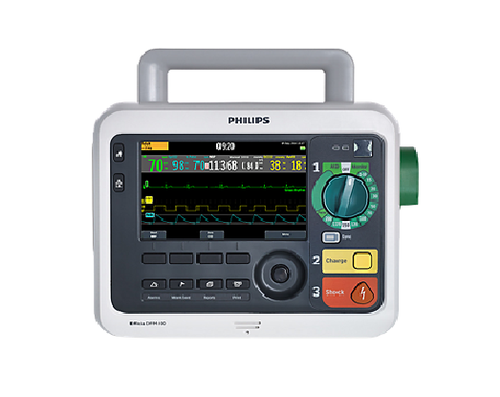
Features & Specifications
- Waveform : Biphasic Truncated Exponential; waveform parameters adjusted as a function of patient impedance
- Dimension : 235mm x 290mm x 205mm
- Size : Approximately 7 in (17.8 cm) diagonal viewing area
- Battery :Rechargeable, lithium ion; see battery label for capacity information
- Weight : 5.66 kg; 12.5 lbs.
Best defibrillator brands in India
- Niscomed defibrillator
- BPL medical
- Philips
- Allied Medical
- Nasan
- Schiller
- Mindray
Conclusion
An automated external defibrillator (AED) is used to normalize the heartbeat at the time of heart attack or cardiac arrest. AED machine uses electric waves to maintain the heart rate. When the heart stops beating because of sudden cardiac arrest, the AED defibrillator is used to give electric shocks to the patient and it will help to restart the heartbeat. Its often used in hospitals but in today’s world where cardiac arrest or heart attack is a normal thing, people are also buying AEDs for home use as well.
Frequently Asked Questions
Q1. What is the most common type of defibrillator?
There are several different kinds of defibrillation devices. The two major types are automated external defibrillators (AEDs) and automatic implantable cardioverter defibrillators (ICDs). AEDs are used in emergency situations involving cardiac arrest.
Q2. When do you use AED vs CPR?
Cardiopulmonary Resuscitation (CPR) is an emergency procedure used if a person’s heart stops beating or breathing ceases. An Automated External Defibrillator (AED) is a portable device used to treat people suffering from sudden cardiac arrest (heart attack), which is potentially fatal.
Q3. What electrodes are used in defibrillators?
Many types of electrodes are available including hand-held paddles, internal paddles, and self-adhesive disposable electrodes. In general, disposable electrodes are preferred in emergency settings because they increase the speed of shock and improve defibrillation technique.
Q4. How many joules are used in defibrillation?
The 2015 American Heart Association (AHA) guidelines for defibrillation state that it is reasonable to use the manufacturer’s recommended dose of the first defibrillation shock. On a biphasic defibrillator, this is usually between 120 joules to 200 joules. On a monophasic defibrillator, this is usually 360 joules.
Q5. Which is the Best Defibrillator?
Here are some best AEDs & PADs for a hospital or clinic in India.
- Biphasic Defibrillator Mediana D500 (Basic)
- PHYSIO CONTROL LIFEPAK 15 Defibrillator with Display
- BPL Monophasic Defibrillator
- Philips Defibrillator Heartstart XL+
Q6. What is ICD made of?
The outer layer of the generator is made of titanium and other metals, with complex circuitry and a high-capacity battery inside. The wires have inner conductors with outer silicone and polyurethane insulation. The tips of the leads are usually coated with platinum or another similar metal.

